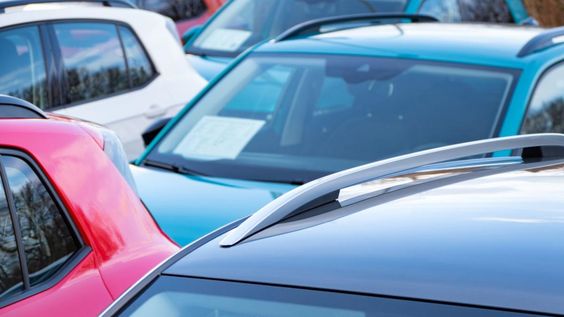Introduction:
Choosing a new car is an exciting experience, but it's also important to prioritize safety. With so many models and features available, it can be overwhelming to know where to start. This guide will provide you with the essential information you need to make an informed decision and choose a car that prioritizes your safety and the safety of your loved ones.
Safety should be a top consideration when buying a car. It's not just about avoiding accidents, but also about minimizing the severity of injuries in the unfortunate event of a collision. By understanding the key safety features and ratings, you can make a confident choice that gives you peace of mind on the road.

Safety Ratings and Tests
One of the most reliable ways to assess a car's safety is by looking at independent safety ratings and test results. Organizations like the National Highway Traffic Safety Administration (NHTSA) and the Insurance Institute for Highway Safety (IIHS) conduct rigorous crash tests and award ratings based on performance.
- NHTSA: The NHTSA's New Car Assessment Program (NCAP) provides overall safety ratings from one to five stars, with five stars being the highest. They evaluate a vehicle's performance in frontal, side, and rollover crash tests.
- IIHS: The IIHS conducts a variety of crash tests, including frontal, side, and rear impact tests, as well as a roof strength test. They also evaluate headlights and vehicle-to-vehicle crash prevention systems.
Key Safety Features
Beyond safety ratings, there are specific safety features that can significantly enhance your protection on the road. Here are some of the most important features to consider:
- Airbags: Modern cars are equipped with multiple airbags, including frontal, side, and curtain airbags. These airbags deploy in a collision to cushion occupants and reduce the risk of serious injuries.
- Anti-lock Braking System (ABS): ABS prevents the wheels from locking up during braking, allowing you to maintain steering control and avoid skidding.
- Electronic Stability Control (ESC): ESC helps you maintain control of the vehicle during sudden maneuvers or slippery road conditions.
- Lane Departure Warning (LDW): LDW alerts you if you drift out of your lane without signaling.
- Automatic Emergency Braking (AEB): AEB can automatically apply the brakes to avoid or mitigate a collision.
- Adaptive Cruise Control (ACC): ACC maintains a safe distance from the vehicle in front of you, automatically adjusting your speed.
- Blind Spot Monitoring (BSM): BSM alerts you to vehicles in your blind spot.
- Rear Cross-Traffic Alert (RCTA): RCTA warns you of approaching traffic when reversing.
Choosing the Right Car for Your Needs
When choosing a safe car, it's important to consider your individual needs and driving habits. Factors to consider include:
- Family Size: If you have a large family, you'll need a vehicle with ample seating capacity and safety features for all passengers.
- Driving Style: If you frequently drive in urban areas or on highways, you may prioritize features like AEB and ACC.
- Budget: Safety features can vary in price, so it's important to set a budget and find a car that offers the best value for your money.
Conclusion
Choosing a safe car is an essential decision that can have a significant impact on your well-being. By understanding safety ratings, key features, and your individual needs, you can make an informed choice that prioritizes your safety and the safety of your loved ones. Remember to research different models, compare safety ratings, and test drive vehicles before making a final decision.





